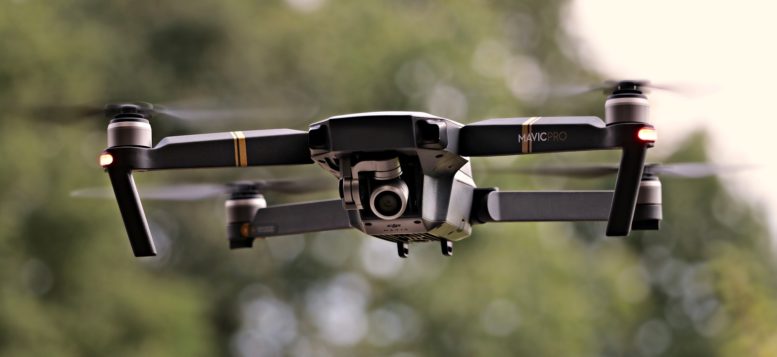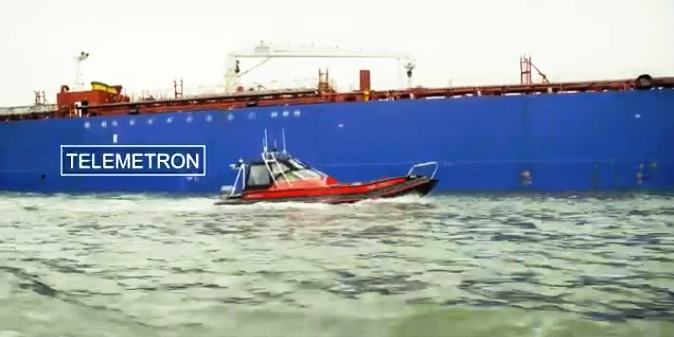The era of digitalization has made room for Autonomous Unmanned Vehicles (AUV) to take place and become a powerful tool for ports and the overall shipping industry, playing a major role in a variety of ‘shipping duties’, such as surveillance, safety, accident and pollution reporting, representing the importance of technology in shipping and making us wonder whether drones will be another brick in the new face of the maritime sector or a tech that will soon be forgotten.
Drones are getting more and more attention, proven to be a fruitful tool in the shipping and offshore industries, transforming the way organizations operate across the world. For the time being, some ports already use drones and have adapted to the new era, but some are still on the trial phase, trying to gasp the pros and cons of using drones in everyday operations.
Uses of drones:
- Pollution detection amid 2020 sulphur cap
- In case of accidents
- Safety inspections
- Search and rescue operations
- Oil spill monitoring
- Port construction work
Drone use / Drone trials
Today, ports are either already using drones or are testing the use of drones in many operations. In essence:
#1 – The Spanish Maritime Safety Agency (SASEMAR) began using European Maritime Safety Agency’s (EMSA) Remotely Piloted Aircraft Systems (RPAS) in the southern Huelva province for identifying and monitoring oil spills, as well as for additional assistance during search and rescue missions. The drone conducts day and night flights and is equipped with electro-optical and infrared cameras, radar and a still camera for detailed views of objects of interest.
#2 – Norway has been using drones that measure sulphur content in exhaust emissions from several ships since 2018.
#3 – China launched a network of drones to monitor strategic parts of Chinese maritime claims in the South China Sea, which are responsible of monitoring uninhabited, hard-to-reach islands and will boost China’s dynamic surveillance of the South China Sea.
#4 – Port of Amsterdam has put on trial both aerial and marine drones for different operations, yet highlighting the importance technology in the industry, adding that the M.A.D.S. (Marine Anti Drone Systems) will support the Port by monitoring legal and illegal flying across its land, by detecting and identifying drones within a 5 km range, providing GPS positioning of both drone and pilot together with the drone’s speed and heading.
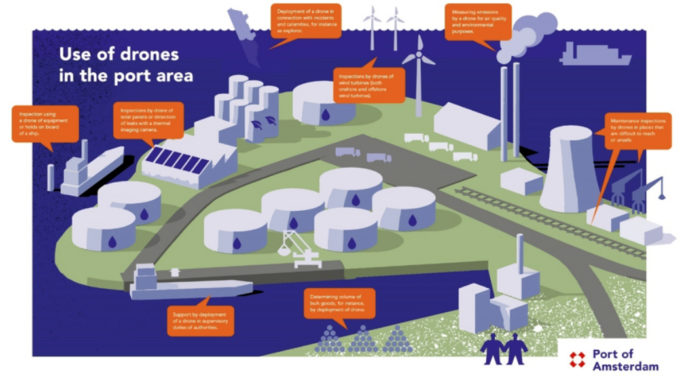
Port of Amsterdam has put on trial both aerial and marine drones for different operations, yet highlighting the importance technology in the industry, adding that the M.A.D.S. (Marine Anti Drone Systems) will support the Port by monitoring legal and illegal flying across its land, by detecting and identifying drones within a 5 km range, providing GPS positioning of both drone and pilot together with the drone’s speed and heading.
#5 – The Port of Hamburg is currently testing the use of Autonomous Surface Vehicles (ASV), which can offer a number of advantages for hydrography.
#6 – Essex Police, the UK Maritime & Coastguard Agency (MCA) and the Royal National Lifeboat Institution (RNLI) partnered on a new one-year-long drone trial to support vital search and rescue action around the coast of Essex.
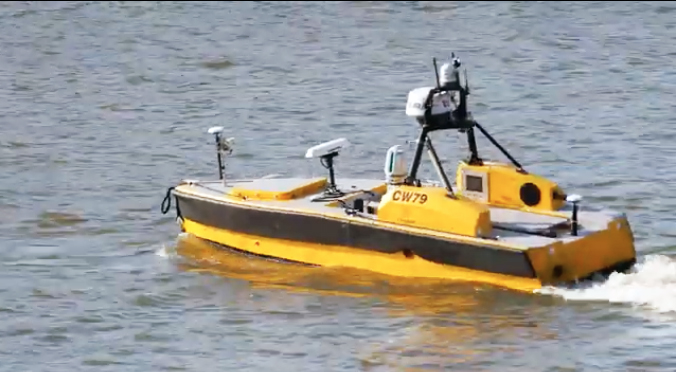
Essex Police, the UK Maritime & Coastguard Agency (MCA) and the Royal National Lifeboat Institution (RNLI) partnered on a new one-year-long drone trial to support vital search and rescue action around the coast of Essex.
#7 – During the construction of Israel’s new Gulf Port in Haifa, the authorities used drones to monitor the construction taking place, as well as measure stockpile.
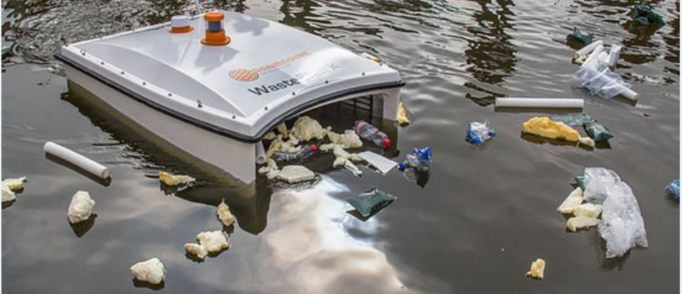
Used for a different purpose, ‘Aquadrone’ gathers garbage from the water. It is called the Waste Shark and it can remove up to 200 liters of trash in one trip, as well as alien/pest flora.
#8 – Used for a different purpose, ‘Aquadrone’ gathers garbage from the water. It is called the WasteShark and it can remove up to 200 liters of trash in one trip, as well as alien/pest flora.
| PROS | CONS |
|
|
Regulations for Drones
ISO Standards
In December 2019, the International Organization for Standardization (ISO) announced the world’s first ISO approved drone standards.
The ISO Standards focus on:
- Air Safety
- Privacy and data protection
- The exciting future for drones
- Impact on the economy
Yet, the draft version of the first ever set of standards for drone operations was first published by ISO in 2018, in a call to gather experts to discuss on the matter to gain more knowledge and experience for the official launch of the Standards.
Bahamas issue guidelines for use of drones’ onboard vessels
The Bahamas Maritime Authority launched an alert informing of the regulations on using Unmanned Aerial Systems (drones) on Bahamian vessels, as the operator has to comply with relevant guidance and instructions on the area when the drone is either registered or flown.
Accordingly, the guideline notes that Operators must have approval from the State of the Operator before conducting operations in high seas airspace. They must likewise coordinate their operations with the air traffic service (ATS) provider responsible for the airspace concerned.
IAATO restrictions on drone use in Antarctica
The International Association of Antarctica Tour Operators (IAATO) has announced new restrictions on commercial drone use in Antarctica, noting that for the 2019-20 season, commercial drone flights are banned in coastal areas without the IAATO operator’s authorization.
Overall, applauding the use of technology in the maritime sector and the acceptance of drones, Standard Club’s Ben Burkard, Underwriting Director, and Julian Hines, Loss Prevention Manager, added that the use of AUVs allows for a much more comprehensive survey given the ease that drones can access hard-to-reach areas, as well as reduce risks.
__________
Source:
- View the original article and videos at: https://safety4sea.com/cm-drones-from-trials-to-worlds-first-drone-safety-standards/
